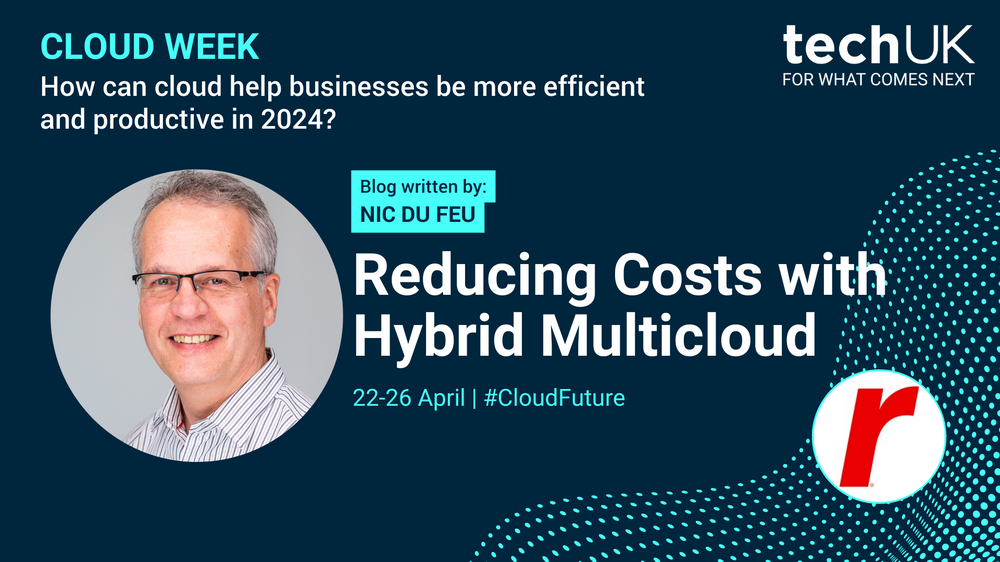Reducing Costs with Hybrid Multicloud (Guest blog from Rackspace)

All businesses face cost constraints. As inflationary pressures drive costs up and margins shrink, one likely result is unsatisfied shareholders. Consequently, leadership scrutinizes IT costs closely.
In-house data centers are expensive and public cloud expenses are unpredictable and escalating. Many organizations still run on-premises infrastructure, but CIOs face pressure to cut costs, confronting the prospect of updating legacy systems and facilities to meet tightening regulations, rising energy use and new sustainability targets.
Over the past decade, businesses have turned to public cloud to improve business agility, flexibility and scalability, transitioning some IT costs from a capex cost model to an opex model. However, for some, there has been a downside: Consumption-based public cloud costs have grown way beyond original expectations due to unforeseen usage patterns, data transfer costs and immature FinOps discipline.
Organizations that fully lifted and shifted to public cloud are now revisiting that decision for certain applications. Similarly, businesses that retained on-premises facilities are looking for new ways to reduce the cost. This is where a managed private cloud – once a discarded option – stands ready to address these and other issues. The result is a hybrid multicloud model where workloads run on the optimum infrastructure – some in public cloud, some in private cloud.
Explore data center optimization
Businesses running their own data centers typically have compelling reasons for doing so, such as security and compliance requirements, a reliance on legacy systems that can’t move to the cloud, and technical debt. These factors have led them to resist fully transitioning to public cloud. However, the cost of these private facilities raises the question: is running an on-premises data center a core competency these companies should maintain, or can they meet their business goals another way?
For many, the answer lies in a hybrid multicloud strategy. By taking this step, a business can free up expensive real estate and a wide range of costs, including HVAC maintenance, physical security, backup power infrastructure, redundant telecommunications, disaster recovery facilities, rising energy costs and around-the-clock staffing. They receive all of these benefits all while retaining the single tenant security and pricing power.
With a hybrid multicloud strategy, businesses can choose where in their technology stack they retain personal employee control. They may only want colocation and to retain control of everything from the servers up. Or they may be comfortable at the platform level, leaving the provider to configure and maintain everything below, including servers, storage, operating systems and virtualization.
The point is that a managed private cloud offers organizations the option to reduce operating costs associated with their dedicated IT infrastructure. The business retains control of critical functions while the provider manages the data center infrastructure. And when integrated with public cloud services in a hybrid multicloud, then a business really does get the benefit of both worlds and is able to run each workload in whichever cloud environment is best.
Assess workloads for efficiencies
Many organizations have received a wake-up call following their transition to public cloud. Applications that ran at no additional cost on-premises can accumulate consumption charges at rates designed for transitory consumption, when idle overnight in the cloud. In the cloud, where consumption pricing rules, costs like these add up quickly.
It turns out that traditional storage, compute and network workloads, which experience relatively steady levels of demand and don’t need to scale on-demand, don’t benefit much from the capabilities of the public cloud and can often run on dedicated private infrastructure for less. So, some businesses that initially jumped into public cloud, simply by lifting and shifting applications, now seek to reduce costs using dedicated IT infrastructure for those consistent workloads. With a hybrid multicloud, IT gets the opportunity to decide what type of cloud to run each application on, to optimize performance and cost. A big win for the business.
Achieve cost reductions
Demand for managed hybrid clouds is growing as businesses seek to optimize costs related to IT operations. With a managed hybrid multicloud, organizations get the best of both worlds - the security, privacy, sovereignty and personal control of a private cloud along with the rapid agility, flexibility and scalability of public clouds.
Compared to an on-premises data center, a managed private cloud better supports stable, constant workloads with low variable costs that remain attractive to many enterprises.
When your goal is to reduce IT costs, it might worth it consider a hybrid multicloud strategy.
Join the Conversation: Find Solve on Twitter and LinkedIn, or follow along via RSS.


